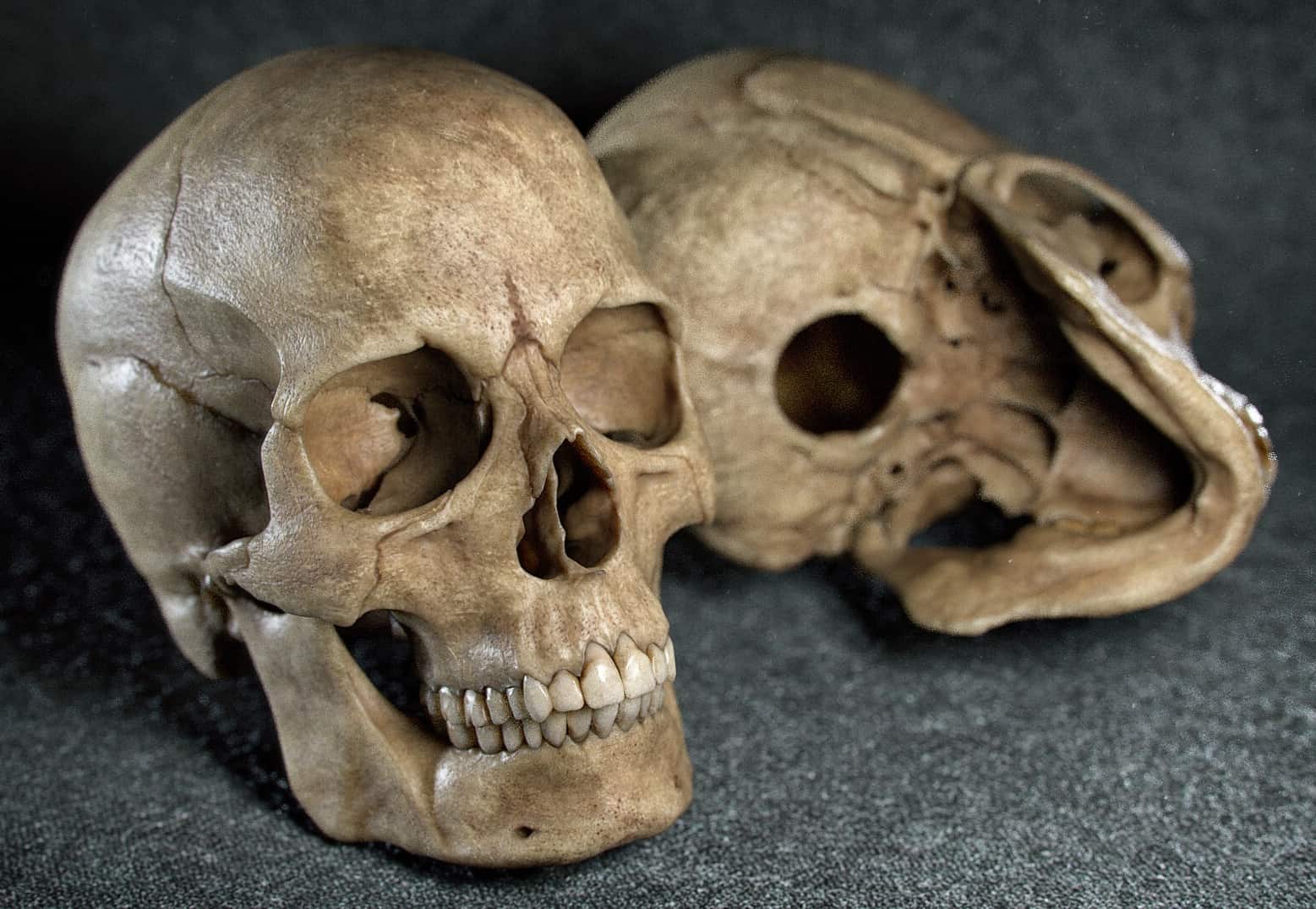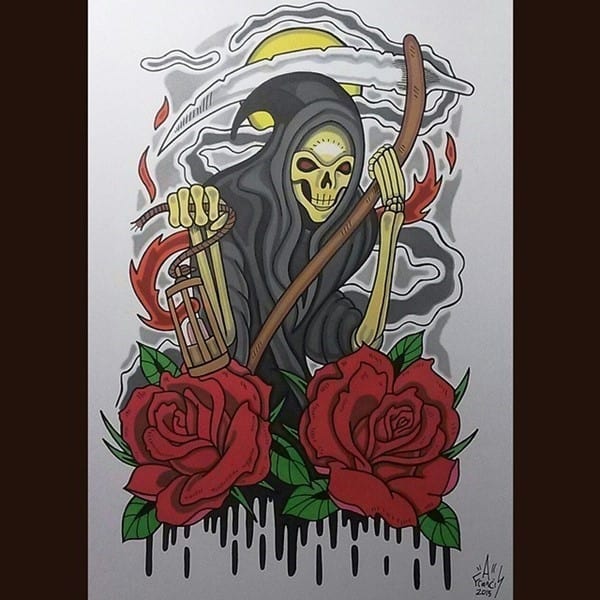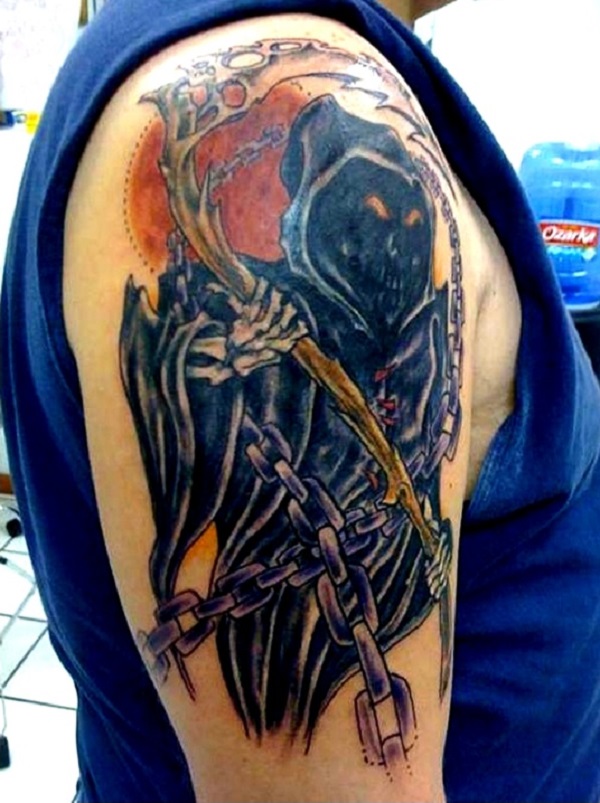

The Grim Reaper is a near universal representation of demise and is found in a wide variety of different cultures with many different names. Due to this the Reaper is often portrayed as having a Pale Horse. Although the figure is generally devoid of religious ties the Reaper is often affiliated with the Horseman of Death from the Abrahamic faith, one of the four horsemen of the apocalypse. The Grim Reaper embodied the concept of the living being like wheat which the Reaper harvests when they grow too old, hence the reaper's scythe. The origin of the Grim Reaper figure comes from the Medieval Europe during the 14th century when more and more Europeans found themselves dying of the mysterious new plague known as "Black Death" (now known as Bubonic Plague). Ares freed Thanatos and Sysiphus was sent to Tartarus, the Greek Hell. Thanatos was chained and bound in the castle of Sysiphus resulting in no living being on Earth being able to die which lead to an uproar from the God of War, Ares. In Thanatos's most famous myth, he was captured and imprisoned by the Sysiphus, the mad king of Corinth. Thanatos was one of two twin sons born to Nyx, the primordial goddess of Night with Thanatos's twin having been the sleep-god Hypnos. But note that it’s not just men who wear the Reaper.The oldest Death figure who resembles the Grim Reaper myth is Thanatos, the Primordial embodiment of demise from Greco-Roman myth. When getting the tattoo done, make sure that it is not too overpowering – or you’ll scare away the ladies (unless that is your intention). If you think you’re going to tire of looking at the reaper’s face every morning in the mirror, then an unobtrusive yet stylish stylized tattoo of Death is the way to go.Īs you can see, your Grim Reaper tattoo can be horrifying and dark, or a subtle reminder that The Clock Is Ticking. If smaller and less dramatic tattoos are what you’re looking for, think about a stylized Reaper that looks just as striking, in a more subtle way. For an even more elaborate tattoo, you could have the Grim Reaper embracing or entwined with Life (perhaps pictured as a young woman), which shows the two sides of our being. With your back as a canvas, you could let the tattoo artist draw up the reaper playing dice, which is a symbol of how randomly he could choose his victims. Monochrome is great, but artists can also add color to make your tattoo pop and turn it into something less broody (though not necessarily less frightening). You could picture him as Father Time (as in old Celtic folklore) or Saturn or Cronus, like the ancient Greeks and Romans pictured him. If black shadows are too grim for you, you could go for a more cartoonish picture with clean lines and maybe a quote or phrase to represent what the Reaper means to you. Grim, somber colors are best suited for this dark subject matter. You can either go for a full-figure portrayal or just the hooded head, with fine and shadowy, contrasted detailing of Death’s skeletal features. The tall figure of the reaper makes for a good large tattoo on the biceps or the forearm. Your tattoo artist will ask you for your ideas on how you want Death to be represented in ink. Ideas and Meanings for Angel of Death Tattoos for Men The flowing robes make for a very versatile subject to place on various parts of the body. Typically Death is pictured in black, moody robes and the iconic scythe. Whatever draws you to the icon of the grim reaper, you can’t ignore the fact that grim reaper tattoos for men can be visually powerful, awe-inspiring, frightening, thought-provoking, moody, even comical, and always a great ice breaker. Wear the Angel of Death on your body to remind you that our days are numbered or to remind yourself each time you look in the mirror, as in the words of the popular Blue Oyster Cult song “don’t fear the reaper” live each day to the fullest. The flowing sand in the hourglass is a reminder that time is short. The scythe is what he cuts down lives with. It is a symbol of inescapable death, an icon to be feared because it turns up unexpectedly like a thief in the night.

Since the fifteenth century, the Reaper has been pictured as a robed, hooded figure wielding a scythe (and maybe an hourglass).

People have iconized the Death for centuries.


 0 kommentar(er)
0 kommentar(er)
